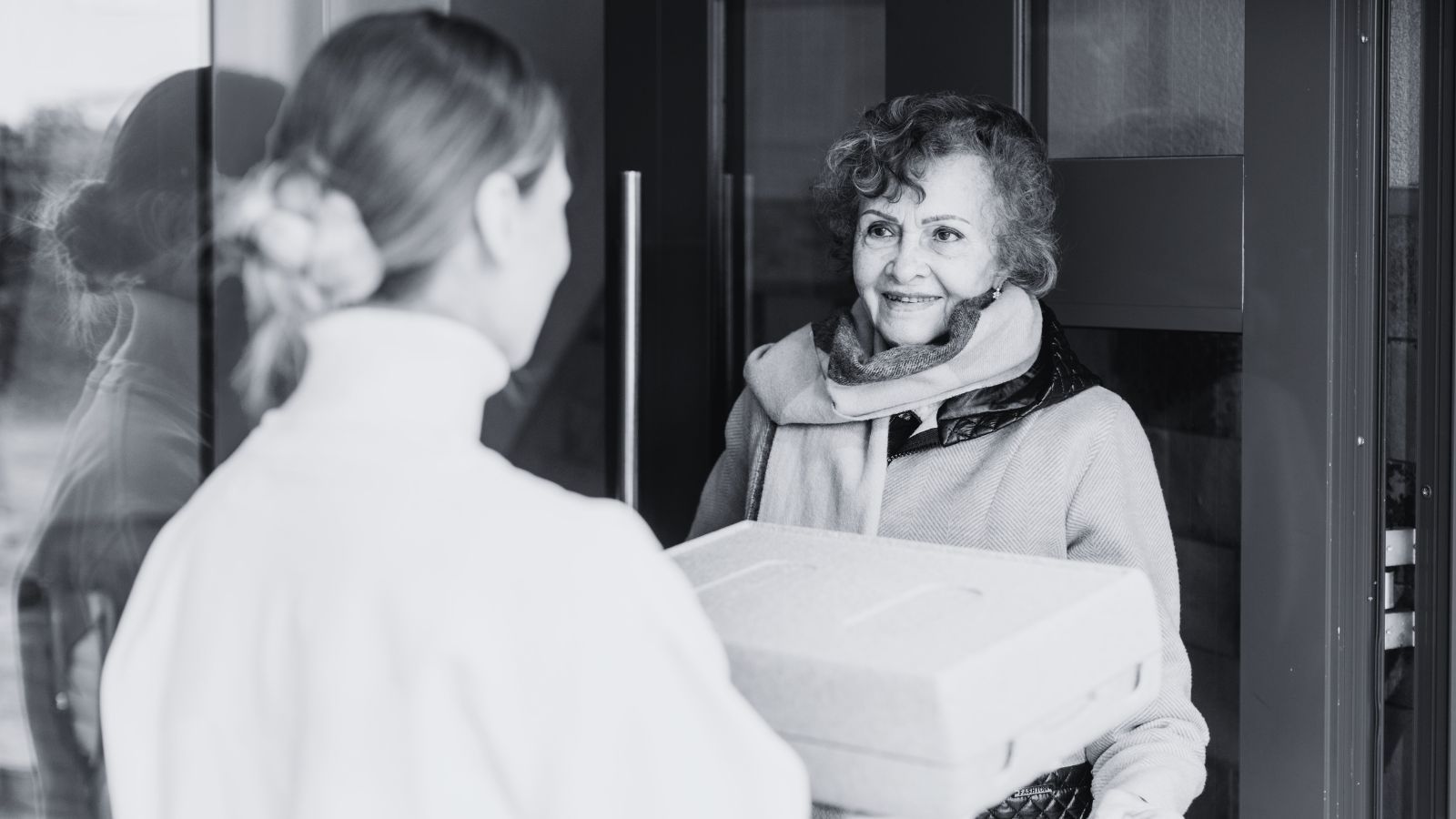Staggering numbers of older adults go hungry in the United States.
Revolution Foods, one of California’s largest providers of healthy meals to schools and communities in need, has partnered with the City of Los Angeles to deliver meals to homebound older adults who have limited access to nutrition and mobility challenges. This food distribution alliance significantly enlarges Revolution Foods’ services tailored for seniors.
Before this program expansion, it was already operational in multiple regions, including Kern County, West Covina, and 19 locales within the San Gabriel Valley. They will roll out this program in conjunction with the YWCA San Gabriel Valley. Revolution Foods, recognized as a Public Benefit Corporation, now caters to over 1,000 seniors in the Los Angeles program. That number translates to the distribution of upwards of 16,000 meals weekly across California.
Why This Food Distribution Program Is Needed
Dominic Engels, CEO of Revolution Foods, emphasized the importance of this collaboration with Los Angeles, highlighting its role in combatting hunger among older people confined to their homes. Engels pointed out that nearly 40% of low-income senior citizens in California struggle with food access issues. The company is, therefore, intensifying its efforts to broaden the reach of its senior meal services statewide.
“This partnership with the City of L.A. is a significant step toward ensuring that homebound seniors do not go hungry. Nearly 40% of low-income seniors in California face food insecurity, and we’re committed to expanding our senior meal services across the state to tackle the tremendous and growing need.” – Dominic Engels | Revolution Foods
In November 2023, the Los Angeles City Council dedicated funds to enable 5,800 seniors to participate in the Rapid Response Senior Meals Program. While the program is open to all Los Angeles residents aged 60 or older, a concentrated effort is made to assist low-income and homebound seniors, particularly in underserved areas such as South L.A., Southeast L.A., Boyle Heights, Pacoima, and North Hills.

Engels further stated that the program is specifically designed to aid seniors with considerable socioeconomic challenges. These include both those living in poverty or anyone unable to access healthy meals due to being homebound or having medical conditions.
Engels explains:
“Our goal is to serve those that need it the most. Seniors with significant social and economic needs – those who live in poverty or cannot access food easily because they’re homebound or medically frail – this program is designed for them.”
Revolution Foods takes pride in preparing wholesome, low-sodium meals in its kitchens. These meals are then frozen and delivered weekly, allowing seniors to reheat them as needed. The company offers a rotating six-week menu featuring over thirty meal options catering to varied palates and dietary preferences. Popular menu items include turkey burgers, lemon dijon chicken, tuna casserole, beef stew, and lemon-breaded fish fillet. Feedback from seniors has been overwhelmingly positive, with 73% rating the meal service as the highest level of satisfaction and 94% scoring it four or higher.
Seniors in communities partnering with Revolution Foods can sign up for the meal delivery service by clicking this link.
Who Is Revolution Foods?
Established in 2006, Revolution Foods is committed to ensuring equitable access to wholesome and nutritious meals for all. The company serves over 35 million meals. Moreover, the company’s dedicated team of over 800 members freshly prepares and delivers meals to schools and senior communities in California and Nevada. Revolution Foods continues its mission as a certified B Corporation and Public Benefit Corporation. You can learn more about the company on its website by following them on LinkedIn.
Food Insecurity for Older Adults is a Widespread Concern in the United States
In the United States, food insecurity among older adults is significant and concerning. As of 2021, approximately 3.8 million adults aged 50-59, representing only 9.4% of this age group, were facing food insecurity.
Though lower than the previous year’s 10.4%, this rate remains a significant concern. Additionally, among seniors aged 60 and older, about 5.2 million, or 6.8%, experienced food insecurity in 2020. The National Council on Aging explains how the problem grew worse from the widespread interruptions of 2020. Each of these factors contributed to increased rates due to uncontrollable factors such as income loss and limited access to food resources.
The scope of the food insecurity issues for older adults:
According to Feeding America, a non-profit agency committed to ending hunger, the prevalence of food insecurity varies across states. For instance, Louisiana had the highest rate of senior food insecurity at 13.4%, while North Dakota had the lowest at 2.8%. Metropolitan areas also show varying rates, with New Orleans experiencing the highest senior food insecurity rate at 13.8%. It’s important to note that food insecurity disproportionately affects communities of color. Statistics also reveal that Black and Latino seniors are more likely to face food insecurity than their white counterparts.
The consequences of the nutrition shortfall
The harmful consequences of food insecurity on older adults extend beyond mere hunger. It is strongly linked to health, nutrition, disability, and chronic health conditions. For example, seniors who live with disabilities face more than twice the rate of food insecurity compared to those without disabilities. The issue is multifaceted and intertwined with factors. Some determining factors include low income, social isolation, and other health concerns.
Furthermore, the Food Research and Action Center explains how programs such as the Supplemental Nutrition Assistance Program (SNAP) are crucial in addressing food insecurity among older adults. However, despite their availability, many eligible older adults do not participate. Those unaware of the program offerings may miss out on potential assistance.

Final Thoughts on This Food Distribution Program for Older Adults in LA County
The older adult population in the United States only continues to grow. Some estimates suggest that more than seven million seniors could lack access to nutrition by 2050. Because of those dire projections, addressing food insecurity remains a critical public health challenge. Programs like Revolution Food’s pre-packaged meal distribution program are a single step in the right direction.

















